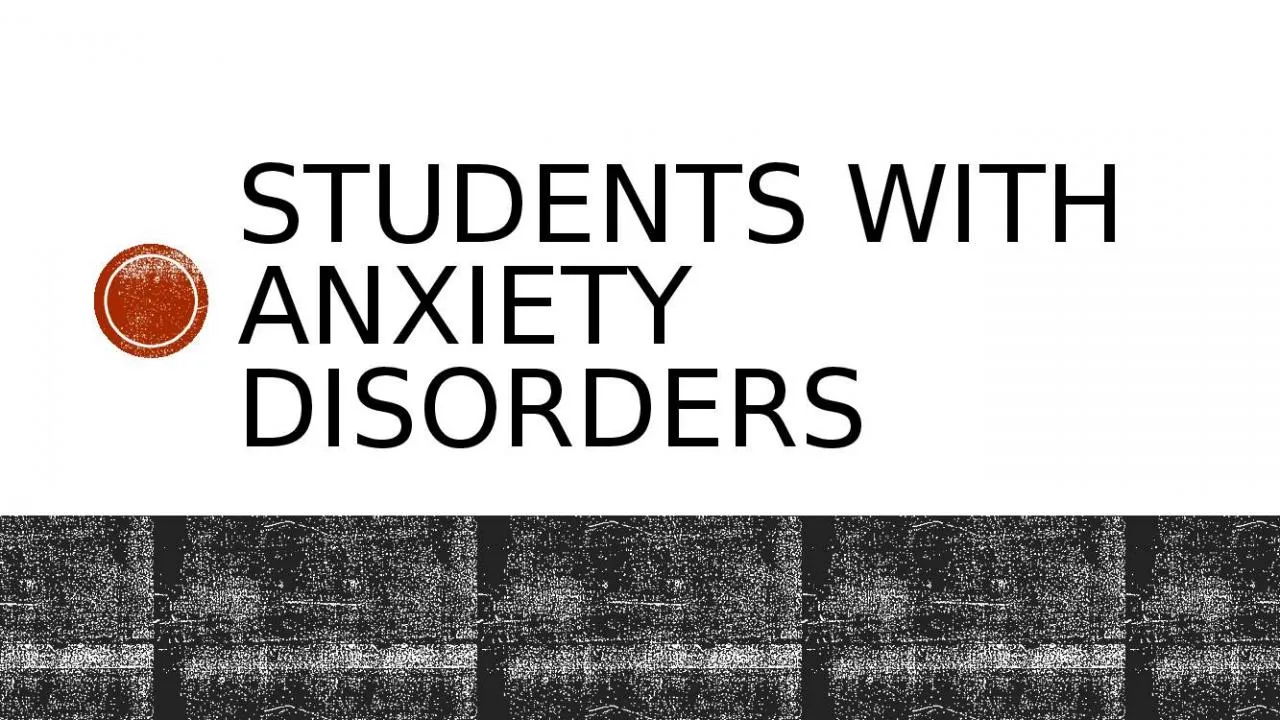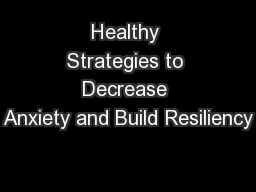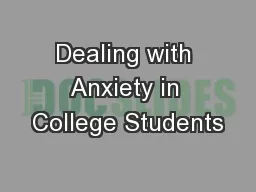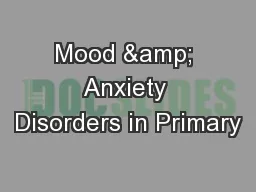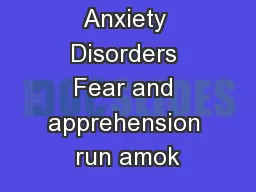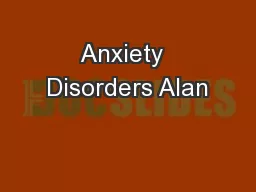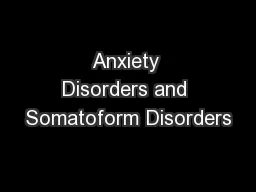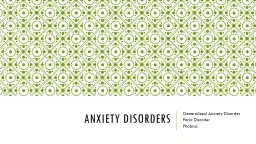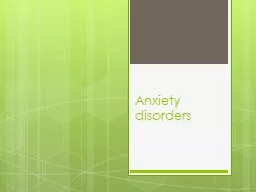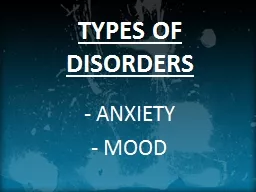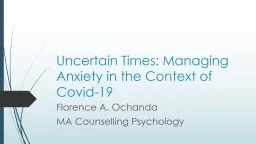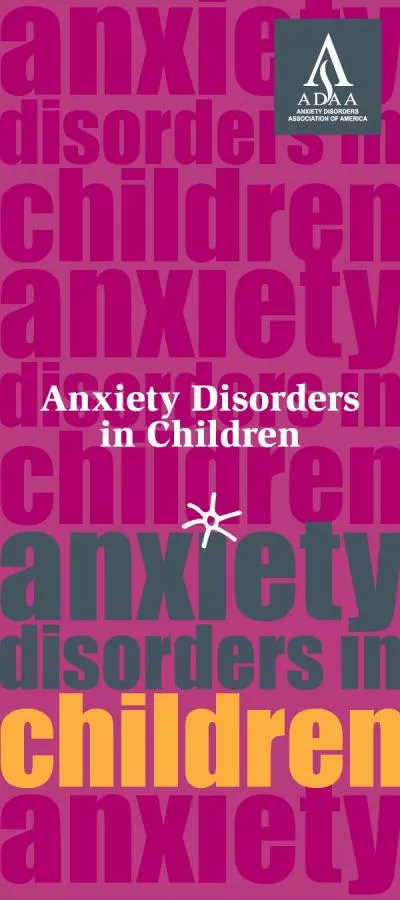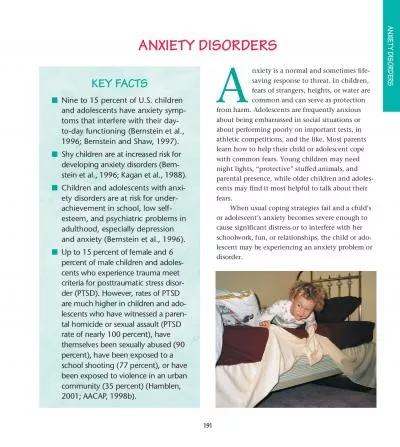PPT-Students with Anxiety Disorders
Author : audrey | Published Date : 2022-02-15
The Need Anxiety DisordersAny type According to National Institute of Mental Health NIMH 2010 251 of 1318 year olds have an anxiety disorder and 59 have a severe
Presentation Embed Code
Download Presentation
Download Presentation The PPT/PDF document "Students with Anxiety Disorders" is the property of its rightful owner. Permission is granted to download and print the materials on this website for personal, non-commercial use only, and to display it on your personal computer provided you do not modify the materials and that you retain all copyright notices contained in the materials. By downloading content from our website, you accept the terms of this agreement.
Students with Anxiety Disorders: Transcript
Download Rules Of Document
"Students with Anxiety Disorders"The content belongs to its owner. You may download and print it for personal use, without modification, and keep all copyright notices. By downloading, you agree to these terms.
Related Documents

